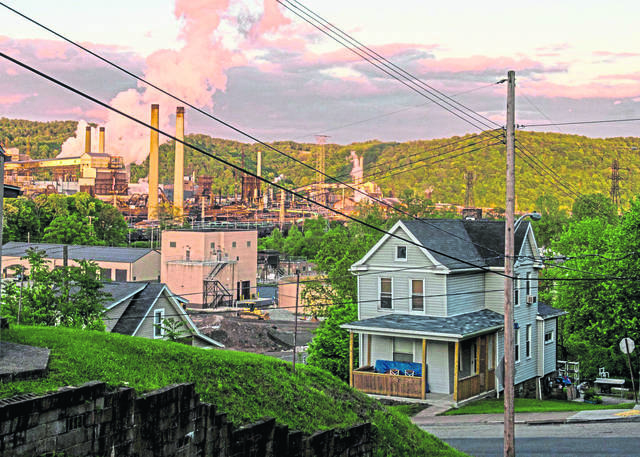Zachary Barber: Pollution is U.S. Steel's gift to Pittsburgh
There’s always something special in the air over the holiday season. This year, unfortunately, that something was a foul-smelling haze of dangerous industrial pollution.
Even in an area known for dirty air, things have been especially bad lately. On Dec. 20, while most of us were doing our last-minute holiday shopping and spending time with family, soot and a smell of rotten eggs poured over our region like a gross industrial eggnog. The foul smell hung in the air and in our noses for the next seven days, through Christmas and much of Hanukkah. In that time, pollution in the Pittsburgh region soared past the EPA’s health-based pollution limits at least 13 times.
So what was responsible for all this bad air? The distinctive rotten egg smell comes from hydrogen sulfide, an industrial byproduct. Pennsylvania’s largest source of this smell is the Clairton Coke Works, a U.S. Steel facility located just south of Pittsburgh and one of Allegheny County’s “Toxic Ten” worst polluters. The Clairton Coke Works churned out 120 tons of hydrogen sulfide in 2018, more than all other sources in the commonwealth combined.
But unfortunately, the problem wasn’t just a bad smell. Along with the rotten egg odor, we also were breathing in soot pollution at levels past the EPA maximum. Soot pollution, also known as fine particulates, has been linked to everything from lung and heart problems to premature death. The Clairton Coke Works is also one of the largest sources of soot in the region. Under its Clean Air Act permit, the facility is allowed to release almost 1,000 tons of soot pollution every year. That’s a lot, especially considering our river-basin geography acts like a big bowl, trapping in a lot of this pollution.
The solution to dangerous industrial pollution seems obvious: clean up major industrial polluters like U.S. Steel. After all, we have the right to breathe clean air, and no one has the right to jeopardize our health.
And yet, our local regulator charged with doing just that would have us blame the weather.
In a statement released the day after Christmas, the Allegheny County Health Department said that the elevated pollution was the result of “several days of heavy fog, very light winds and continued strong and lengthy temperature inversions.” Translation: It’s the weather’s fault, not polluters’.
Anyone who’s lived in Pittsburgh knows that hoping the weather will cooperate is a bad bet. With the looming threat of climate change, we can count on the weather to get worse. Instead of setting lax pollution limits in the hope that a magical wind will blow the toxic emissions somewhere else, we should go right to the source by cleaning up the dirty industrial polluters putting our health at risk. After all, the weather can’t trap pollution that was never released.
The Health Department has taken good steps in recent years to crack down on illegal pollution from U.S. Steel, issuing record fines and taking the company to court. But it’s clear that there’s a lot more work to be done to rein in still-dangerous emissions. A good place to start would be following through on a 2018 promise to tighten the coke oven regulations that cover this facility. With updated clean air protections, we could clamp down on the amount of soot and rotten egg odor that the facility spews out.
Unless the county takes serious action, it risks letting U.S. Steel ruin next year’s holiday season. I don’t know about you, but I’d much rather worry about what’s going under the tree than what’s going up my nose.
Zachary Barber of Squirrel Hill is a clean air advocate for PennEnvironment.
Remove the ads from your TribLIVE reading experience but still support the journalists who create the content with TribLIVE Ad-Free.

